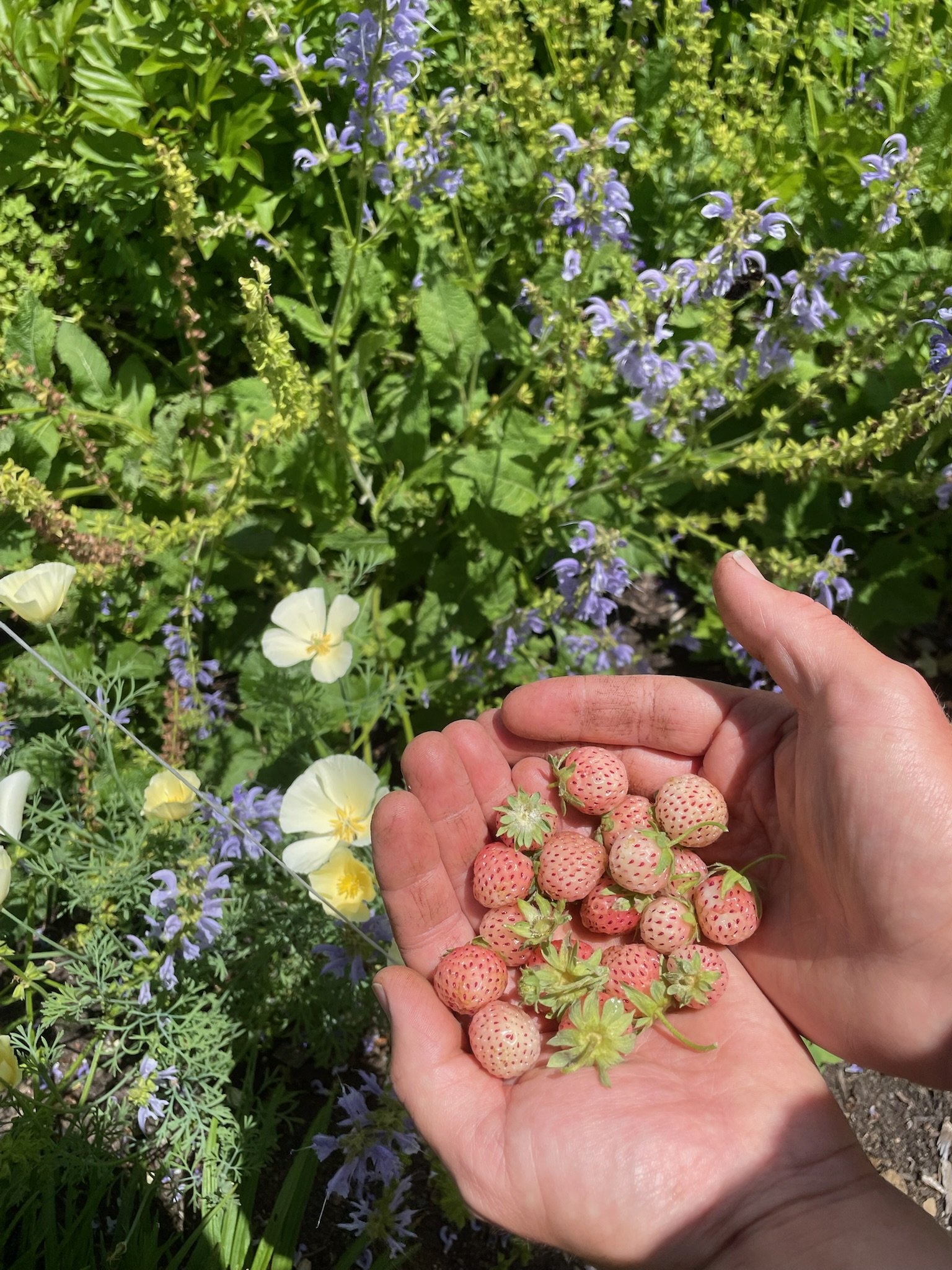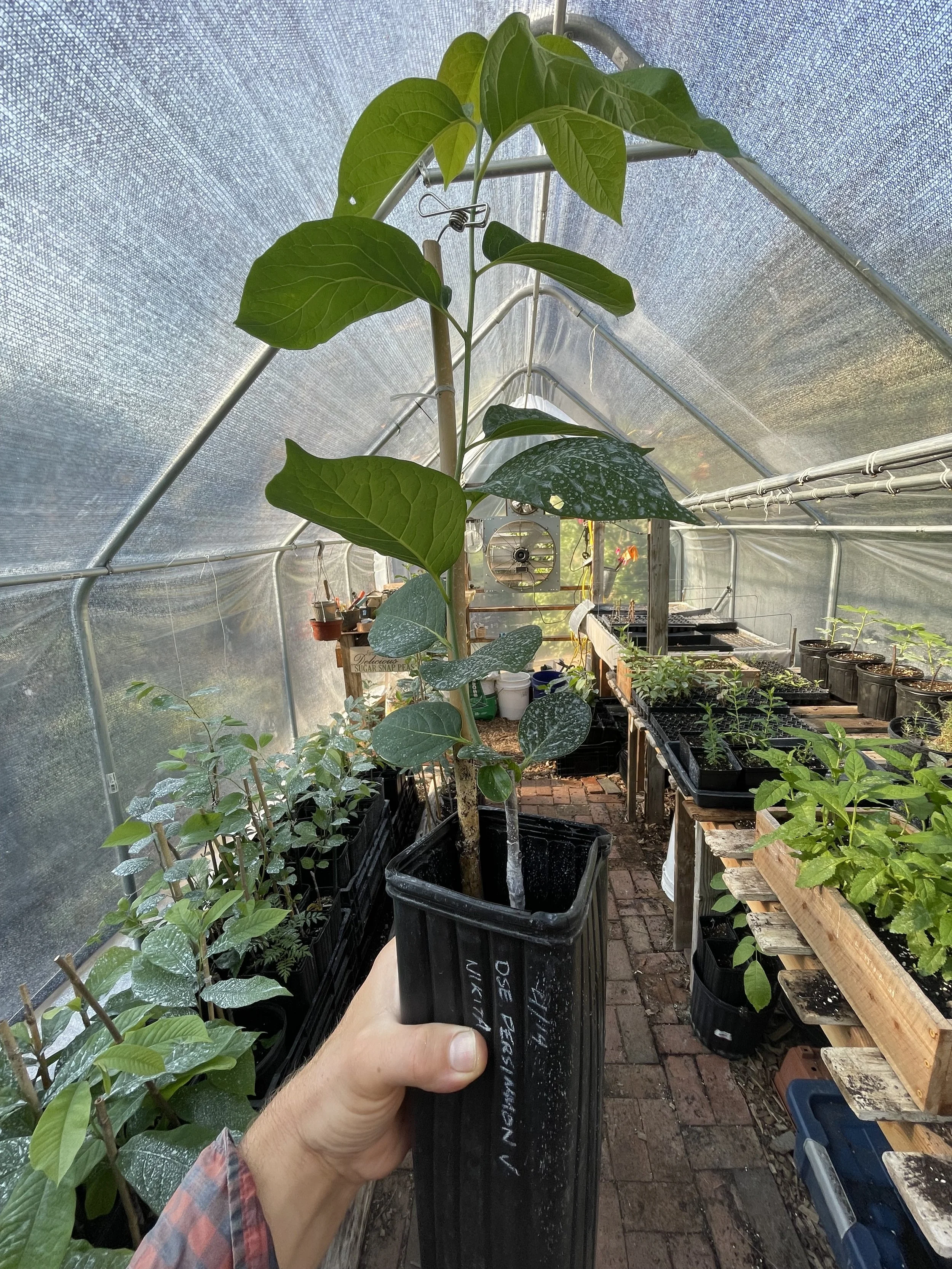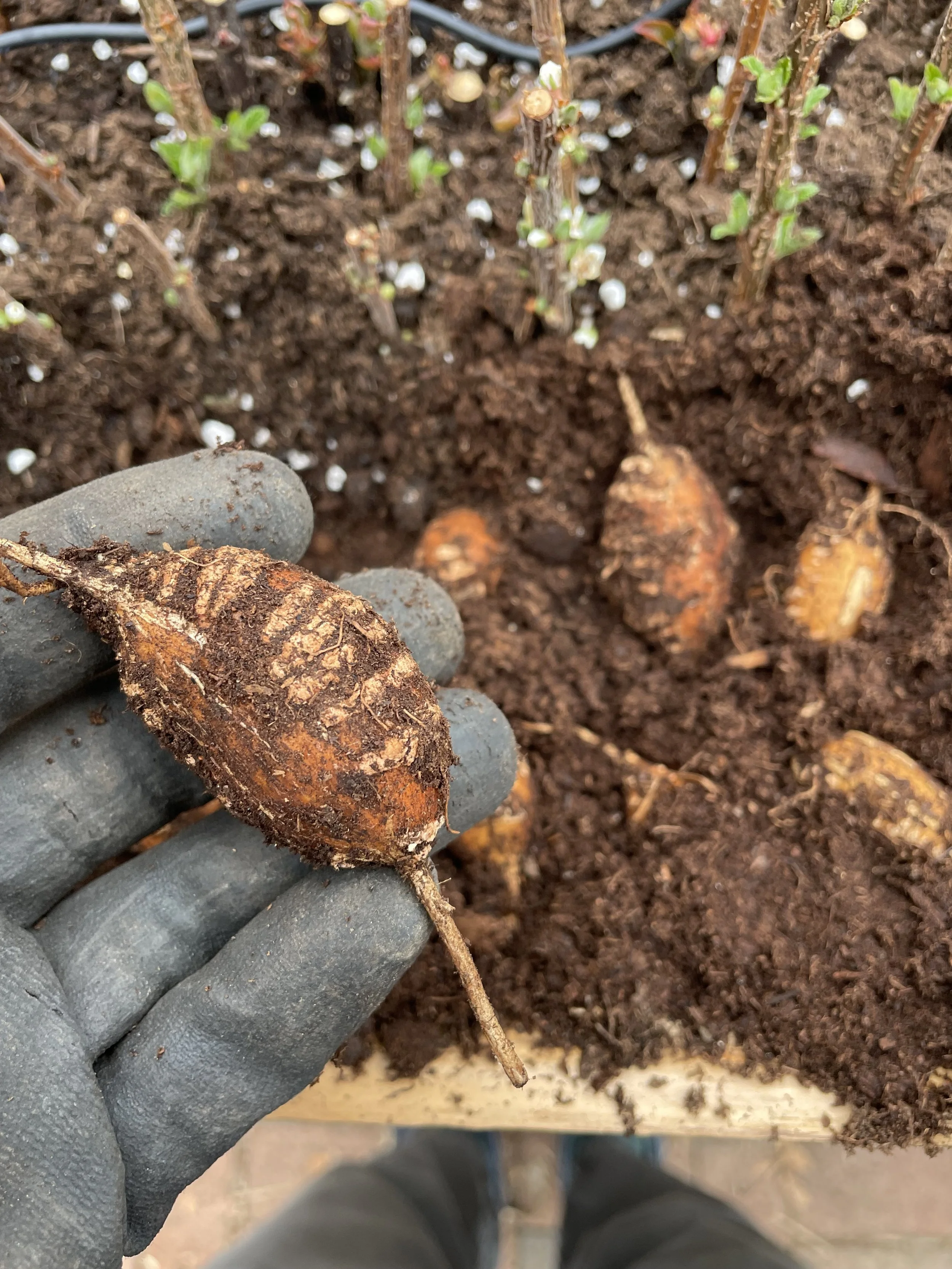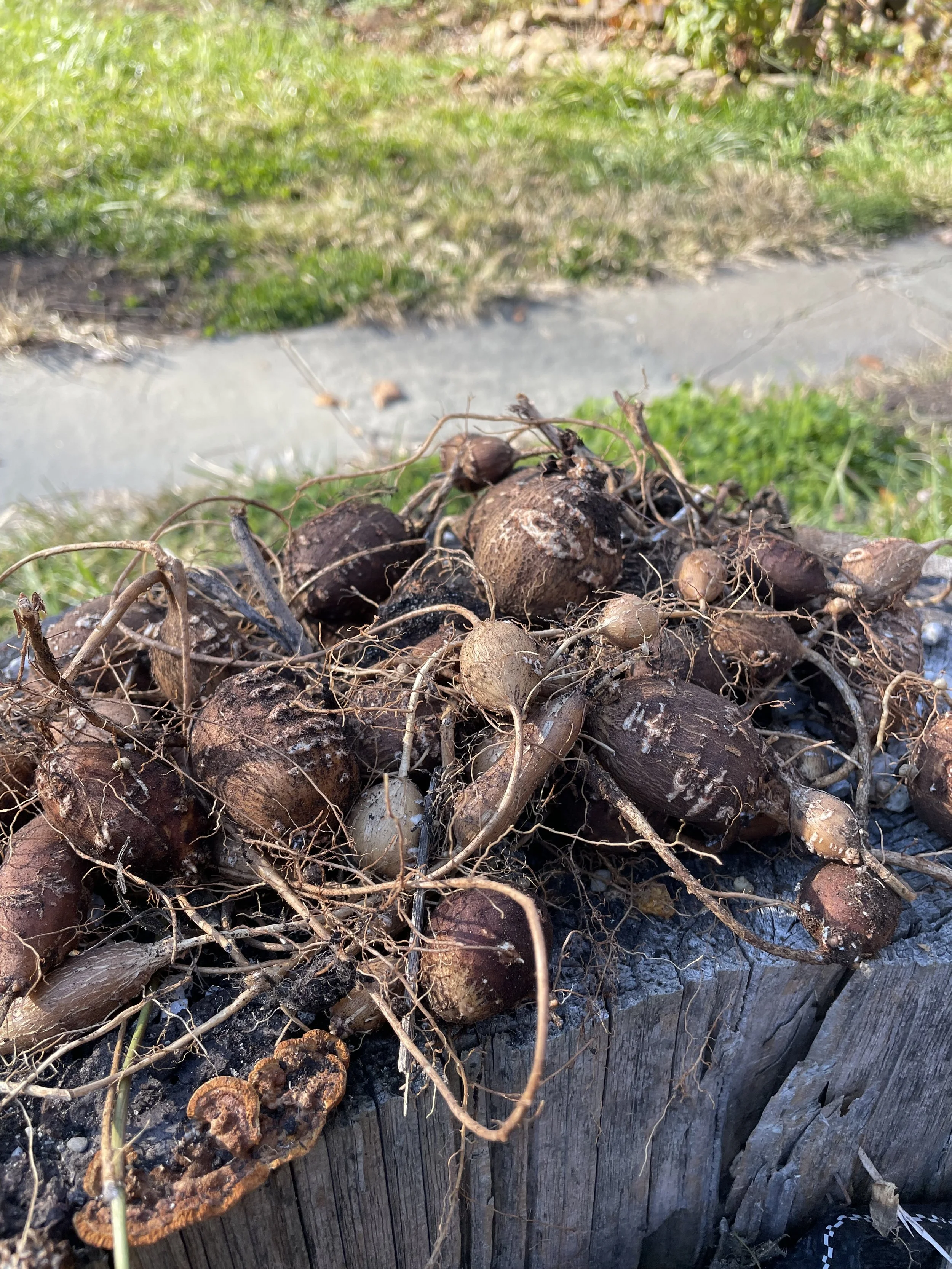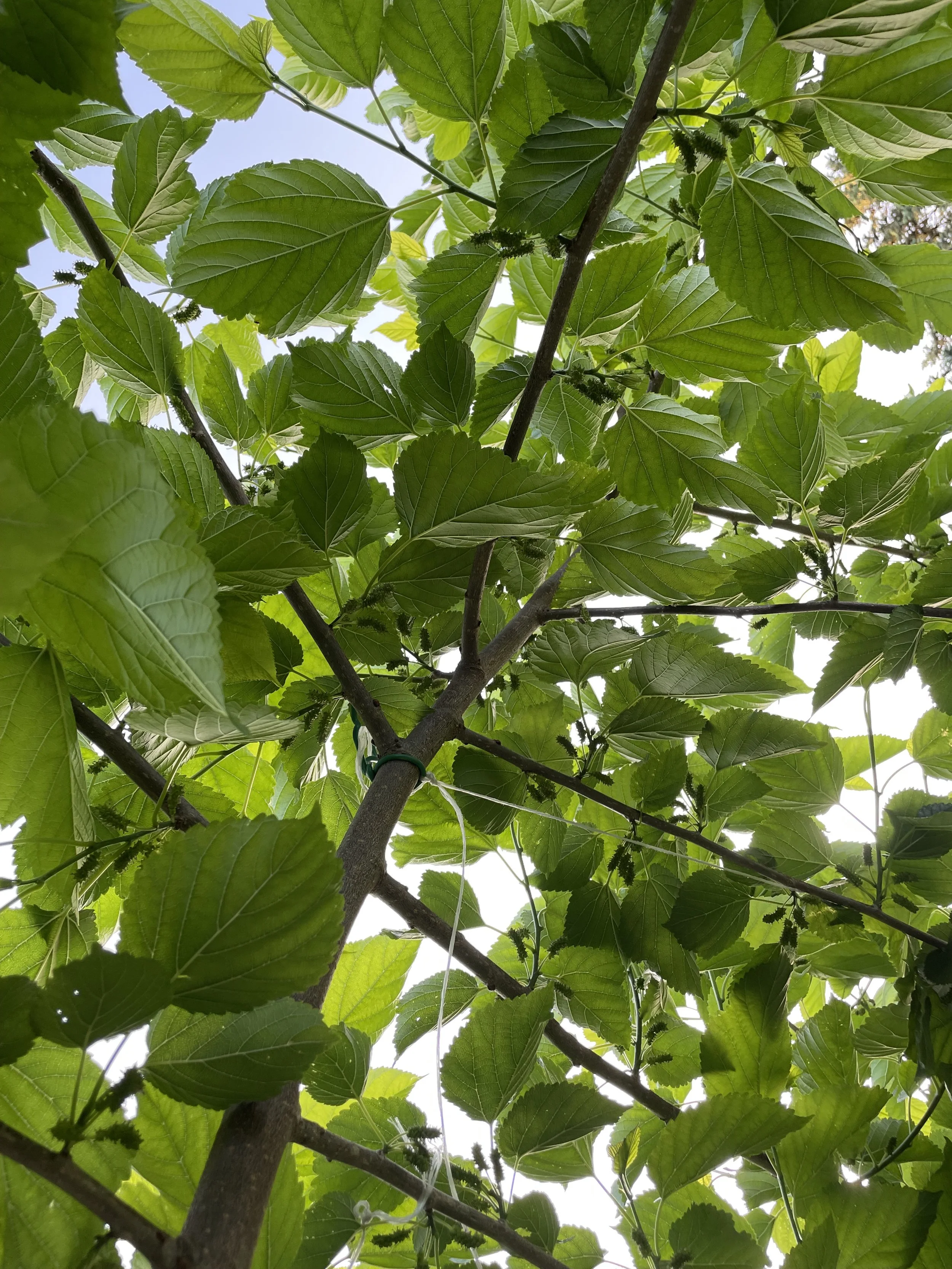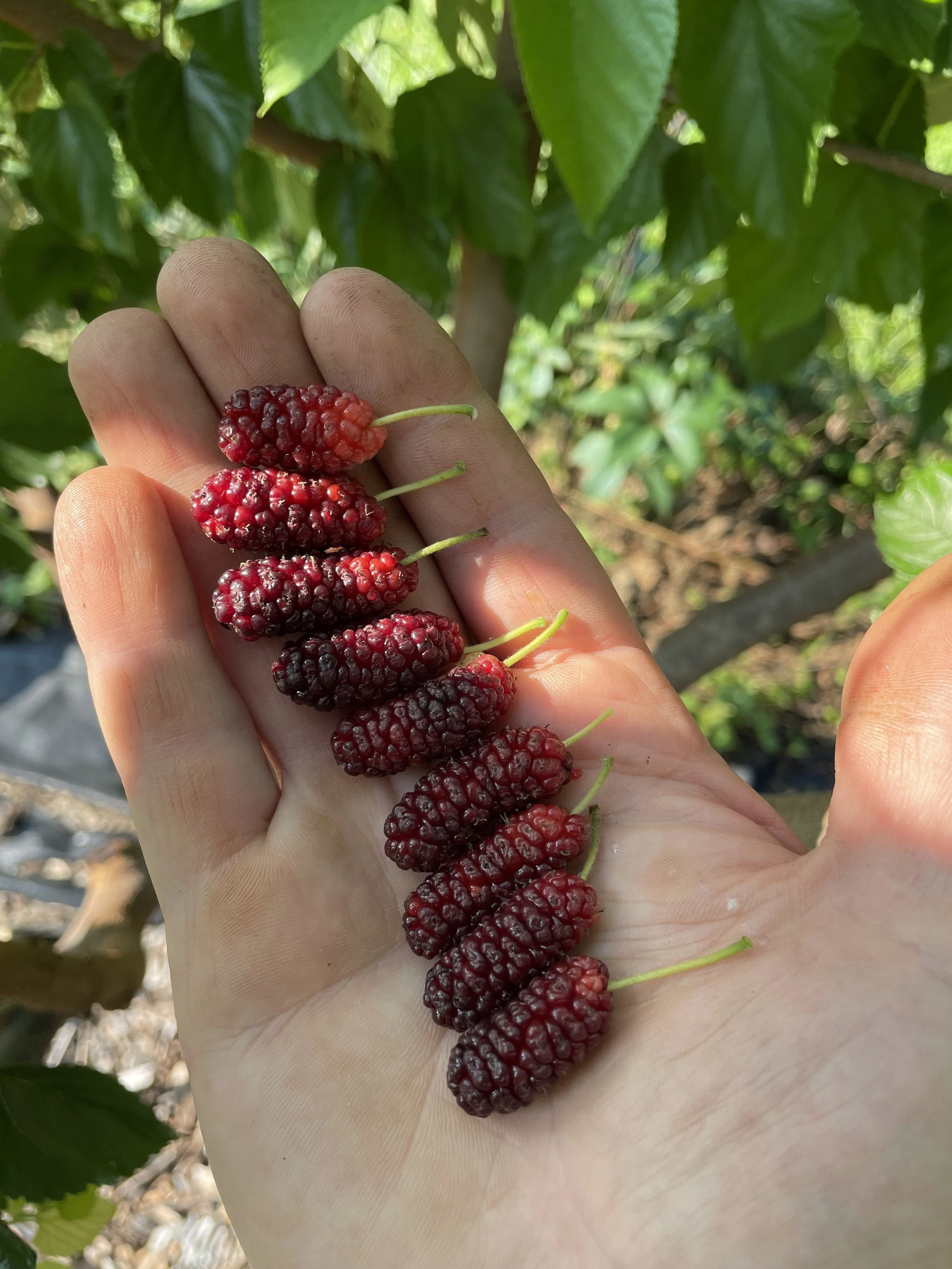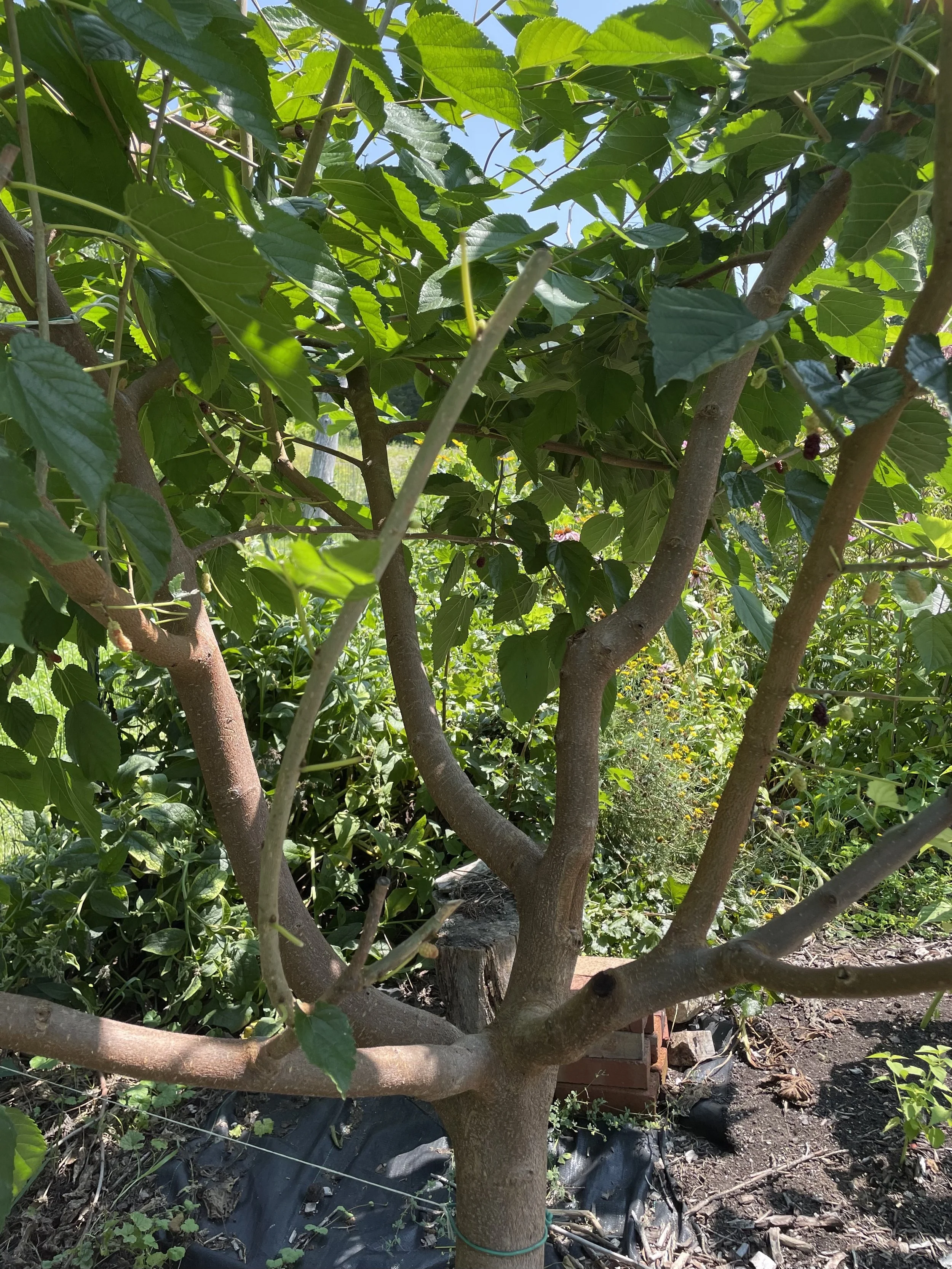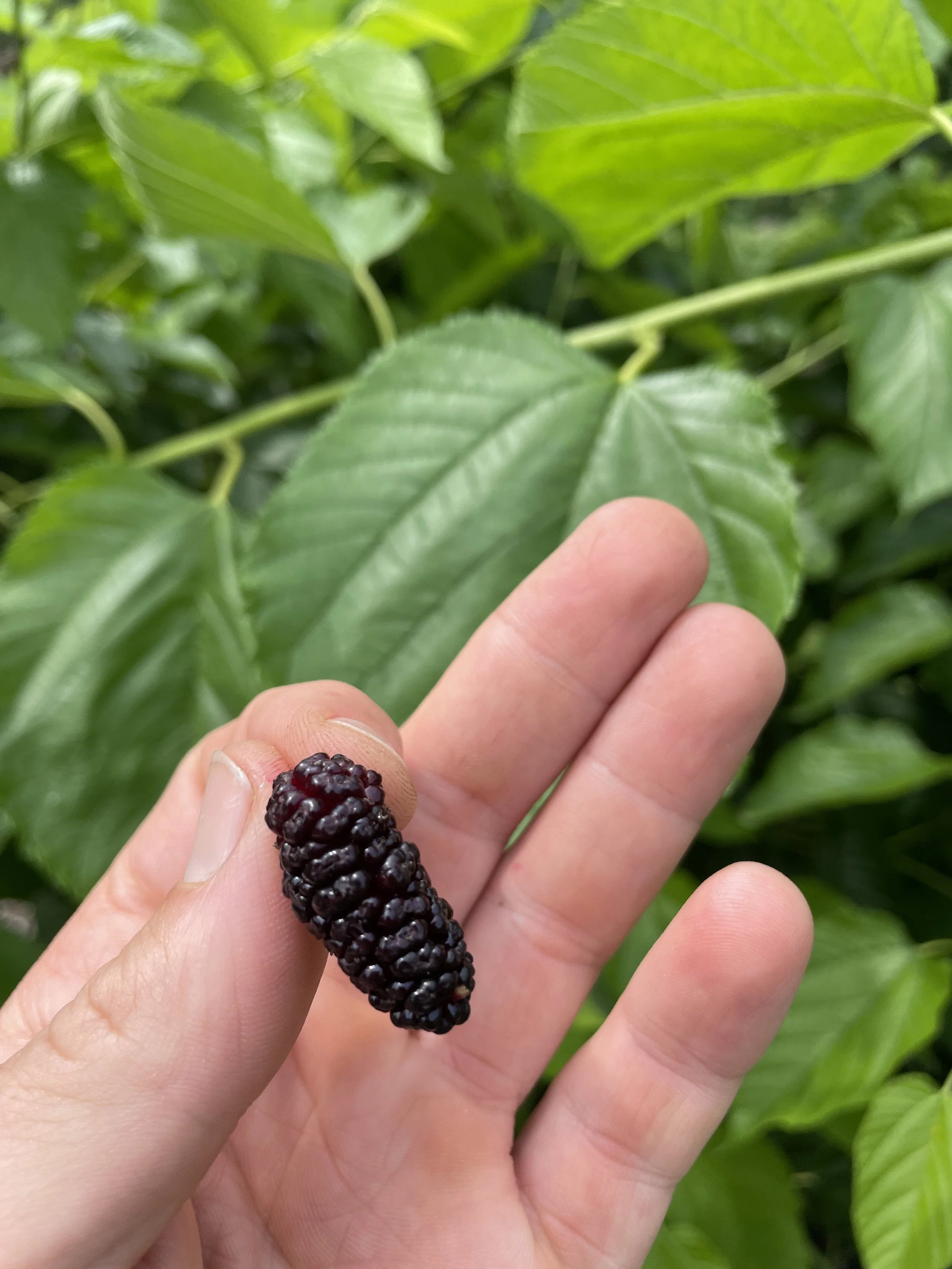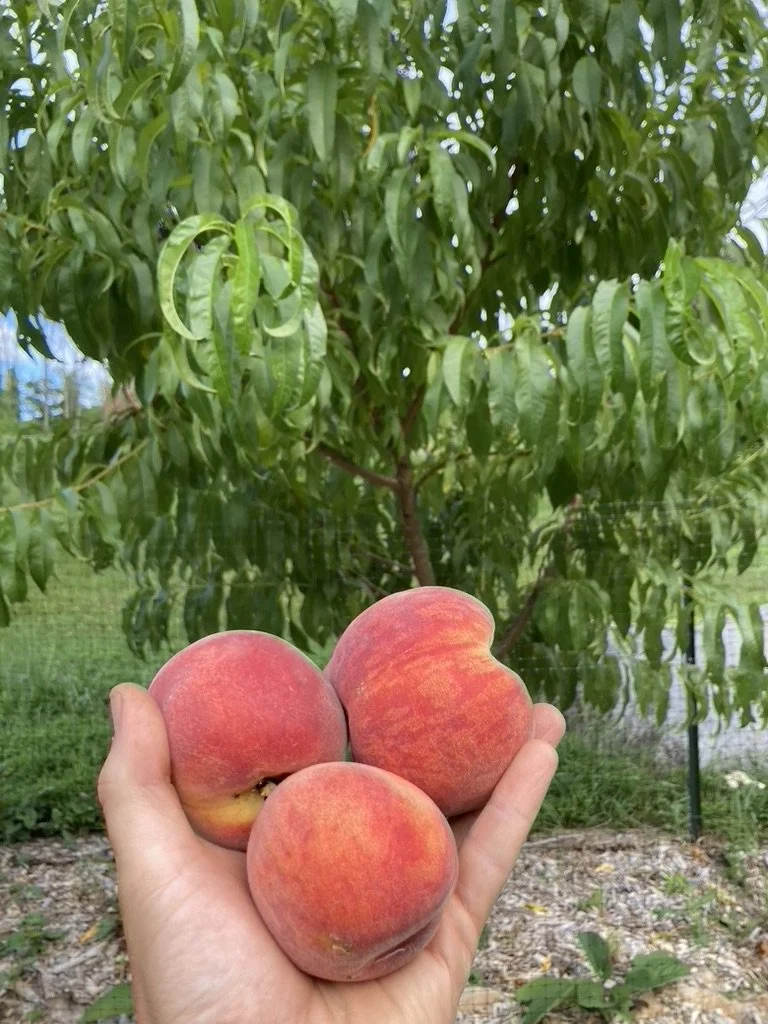 Image 1 of 4
Image 1 of 4

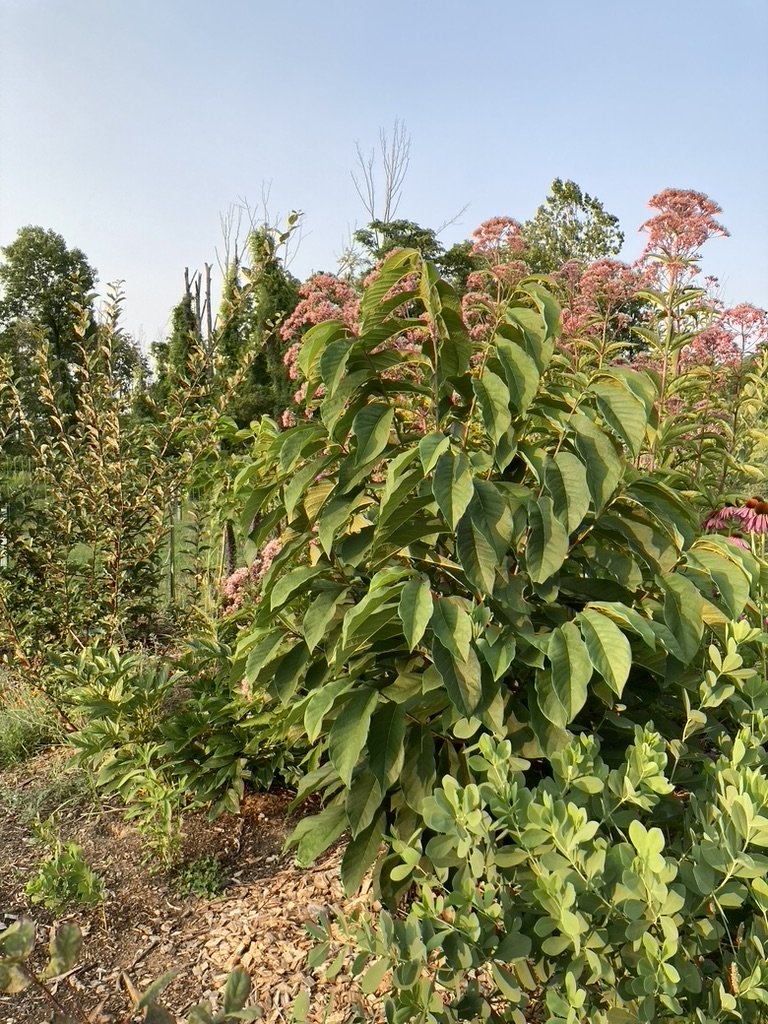 Image 2 of 4
Image 2 of 4

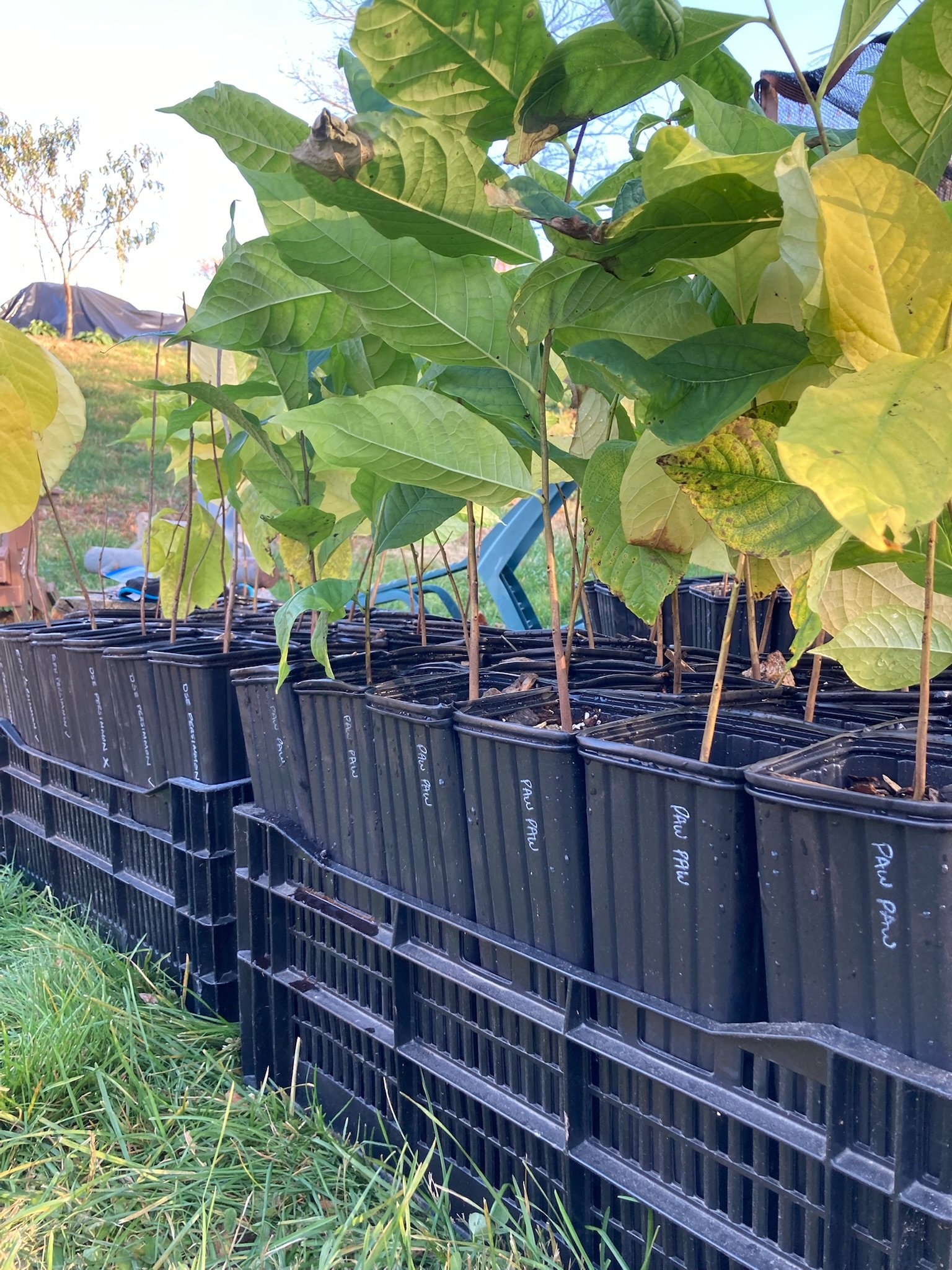 Image 3 of 4
Image 3 of 4

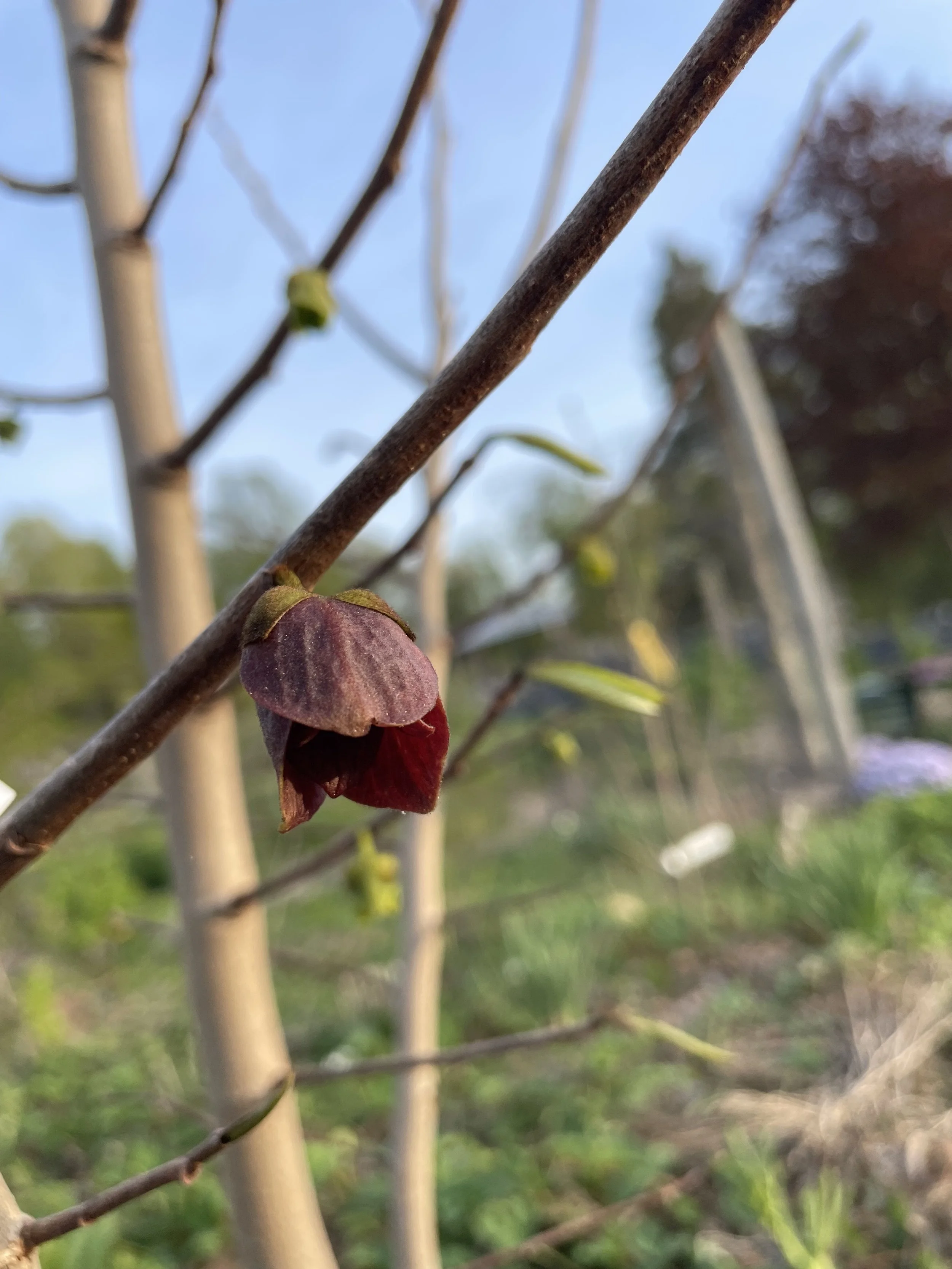 Image 4 of 4
Image 4 of 4





Paw Paw (Bare Root)
(Asimina triloba)
If you’re only going to grow one kind of fruit tree in your backyard, we would recommend paw paw! With banana-like flavor and large shiny leaves, these trees are somehow both tropical and hardy down to -20F. Beautiful, native, compact, easy to grow trees, and you won’t find the fruit in stores. Native to a wide range of North America, paw paws were cultivated, selected and dispersed by indigenous populations for countless generations; this is likely why we now have such a beautifully resilient tree that bears North America’s largest fruits. Unlike so many fruit trees, paw paws do not suffer from any major pests or diseases, making them a great option for no-spray orchards. Deer may nibble young branches in winter but because of compounds found in the leaves they generally do not prefer it. The most care they will need is early on: young paw paws are delicate, so careful planting, some shade when young, and adequate moisture while establishing should ensure success.
Flavor profile: Tropical, banana, mango, custard
Hardiness zone: 4-9
Light: Part shade to full sun
Soil: Rich, well-drained soil with pH 5.5-7
Mature height: 15-20’
Spacing: 8-12’ apart
Pollination: At least 2 trees required for pollination, but 3+ is recommended. Seedling trees are all genetically distinct and will pollinate one another. For grafted trees, two distinct cultivars are required.
Planting tips: Plant with great care to not damage the taproot, which is vital to establishment for paw paws. Loosen soil 1’ deep below the tap root for quicker establishment. Mixing a cup of perlite into the soil at the bottom of the planting hole can also help in taproot growth. Consistent watering is crucial for newly planted trees to help minimize transplant shock and establish strong roots.
Growing tips: Young paw paw seedlings are delicate and can be easily scorched by intense sunlight, which is why they are almost always found as an understory tree in nature. You can choose a site that provides partial shade, but paw paws are most productive in full sun once established. So alternatively, you can use a 30-50% shade cloth to temporarily tent the plant for the first 1-2 years, after which it will be happy in full sun.
We are unable to ship this product outside the contiguous US or to California.
All fall 2025 orders are for dormant, bare root plants and will be shipped or available for pick up in October-November. Ordering closes November 1st.
(Asimina triloba)
If you’re only going to grow one kind of fruit tree in your backyard, we would recommend paw paw! With banana-like flavor and large shiny leaves, these trees are somehow both tropical and hardy down to -20F. Beautiful, native, compact, easy to grow trees, and you won’t find the fruit in stores. Native to a wide range of North America, paw paws were cultivated, selected and dispersed by indigenous populations for countless generations; this is likely why we now have such a beautifully resilient tree that bears North America’s largest fruits. Unlike so many fruit trees, paw paws do not suffer from any major pests or diseases, making them a great option for no-spray orchards. Deer may nibble young branches in winter but because of compounds found in the leaves they generally do not prefer it. The most care they will need is early on: young paw paws are delicate, so careful planting, some shade when young, and adequate moisture while establishing should ensure success.
Flavor profile: Tropical, banana, mango, custard
Hardiness zone: 4-9
Light: Part shade to full sun
Soil: Rich, well-drained soil with pH 5.5-7
Mature height: 15-20’
Spacing: 8-12’ apart
Pollination: At least 2 trees required for pollination, but 3+ is recommended. Seedling trees are all genetically distinct and will pollinate one another. For grafted trees, two distinct cultivars are required.
Planting tips: Plant with great care to not damage the taproot, which is vital to establishment for paw paws. Loosen soil 1’ deep below the tap root for quicker establishment. Mixing a cup of perlite into the soil at the bottom of the planting hole can also help in taproot growth. Consistent watering is crucial for newly planted trees to help minimize transplant shock and establish strong roots.
Growing tips: Young paw paw seedlings are delicate and can be easily scorched by intense sunlight, which is why they are almost always found as an understory tree in nature. You can choose a site that provides partial shade, but paw paws are most productive in full sun once established. So alternatively, you can use a 30-50% shade cloth to temporarily tent the plant for the first 1-2 years, after which it will be happy in full sun.
We are unable to ship this product outside the contiguous US or to California.
All fall 2025 orders are for dormant, bare root plants and will be shipped or available for pick up in October-November. Ordering closes November 1st.



